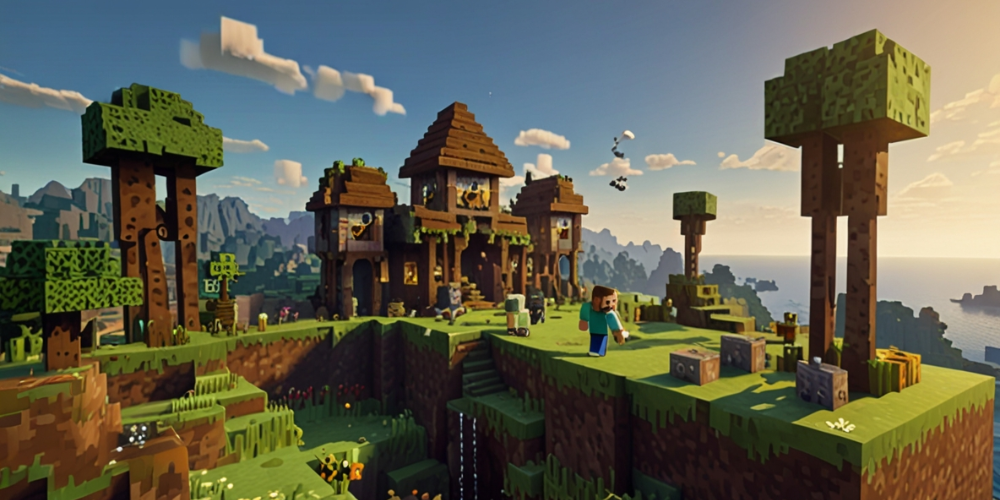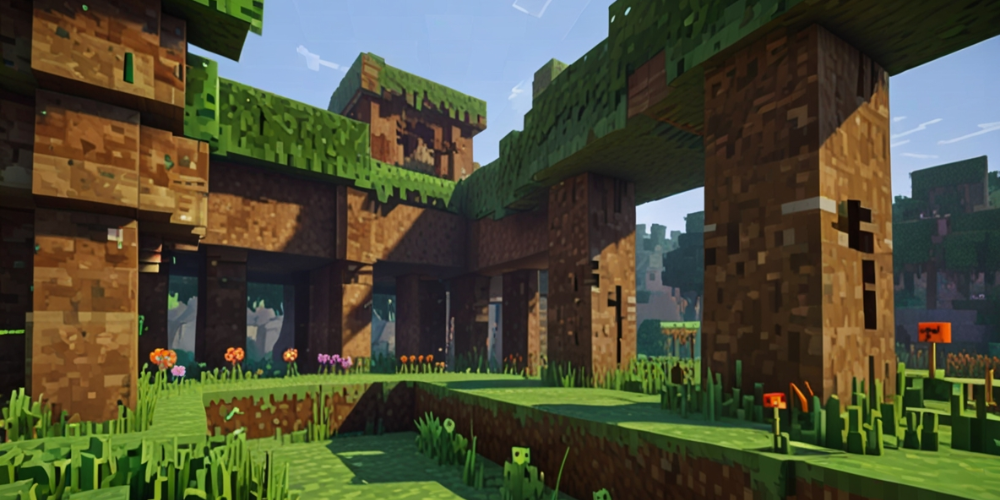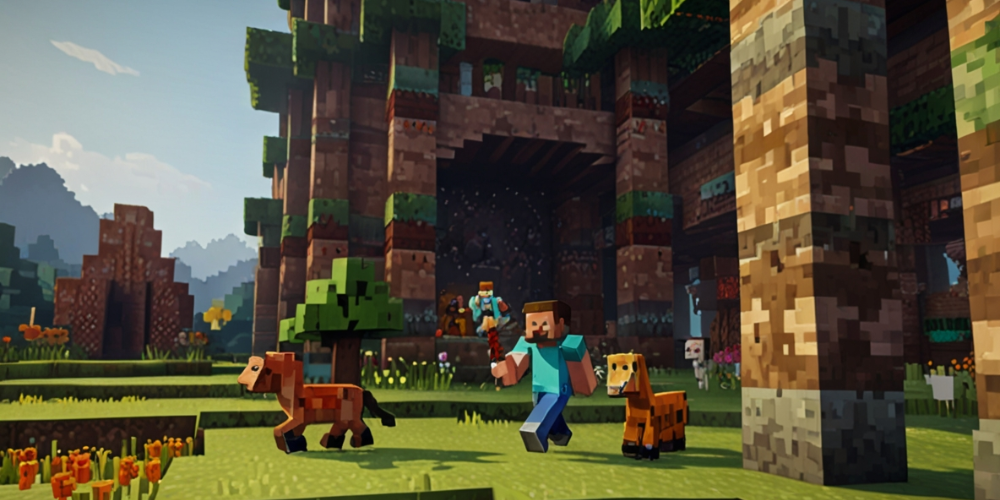Building Efficient Farms in Minecraft

When I first stepped into the pixelated world of Minecraft, I was captivated by the endless potential it offered. Surrounded by blocky landscapes, I felt a twinge of excitement imagining the farms I could build. I spent countless hours mining and crafting, yet I knew that a steady food supply was essential for survival. Thus began my quest to build efficient farms in Minecraft, transforming my humble plot into a thriving agricultural paradise.
Choosing the Right Location
The first step in my farming adventure was selecting the perfect location. I wandered over plains and hills, seeking a flat area with ample sunlight and water access. I discovered that farms thrive best near water, so I made sure to settle near a river or lake. Balancing my proximity to resources like trees and animals was vital, especially for an efficient farm setup.
Understanding Soil and Tilling
With my location nailed down, I learned about the different soil types. Under the sun, cultivating the soil is essential for the growth of crops such as wheat, carrots, and potatoes. Using my diamond hoe, I meticulously tilled blocks of dirt into farmland, ensuring each tilled block was watered by adjacent water sources. I found this simple step would significantly impact my crop yield.

Crop Selection for Efficiency
Throughout my farming experiences, I discovered that choosing the right crops makes all the difference. Wheat became my staple, providing ample bread, which kept my hunger bar filled. Carrots and potatoes offered a secondary food source while being easy to plant and harvest. I experimented with melons and pumpkins, noting their growth patterns and yields, aiming for a diversified but efficient farm. Each crop had its specific growth cycle, and I learned to strategize my planting to maximize my outputs for each season.
Automating the Watering System
As I delved deeper into my farming endeavors, I realized that managing water sources could be labor-intensive. Excel breathes into my farming life. I researched redstone mechanisms, discovering ways to automate the watering process. By leveraging dispensers filled with water buckets and redstone circuits, I built a simple but effective irrigation system that would water my crops automatically, significantly easing my workload.
Pest Control: Managing the Mobs
While tending to my farm, I soon faced the challenge of pests. Mobs like skeletons and creepers wreaked havoc on my precious crops. To combat this, I built protective fences around my farm, using wooden planks to create a sturdy barrier. I also constructed torches to illuminate the area at night, keeping hostile mobs at bay and ensuring my crops could grow uninterrupted.

Building a Storied Barn
As my farm flourished, the need for storage became apparent. I decided to build a grand barn where I could store my harvested goods, seeds, and farming tools. I decorated it with wooden beams and hay bales, creating an aesthetic that embodies the essence of country living. Organizing my storage allowed me to access resources quickly without digging through chests every time I needed something.
Incorporating Animal Husbandry
No farm is complete without animals, so I began my venture into animal husbandry. I first started with a few chickens, employing a simple pen to contain them. The eggs provided me with a new food source, and I quickly expanded to include cows and sheep. The benefits of breeding these animals for resources like milk, wool, and more food became immediately apparent, augmenting my farm’s efficiency.
Utilizing Fertilizers
While tending to my crops, I stumbled upon the possibilities of fertilizers. I discovered that skeleton component meals, made from skeleton components collected from undead mobs, accelerated crop growth. It became an essential component of my farming routine, allowing me to harvest crops quicker and thus increasing my overall productivity. Each skeleton component application provided me with more food in a shorter time frame.
Crafting a Greenhouse
The importance of crop growth led me to design a greenhouse. I constructed a glass-roofed building to house my crops, optimizing their growth conditions while protecting them from the elements and pests. The glass panes not only added a modern aesthetic but also created an ideal microclimate. I enjoyed the sight of vibrant crops in every season, feeling accomplished every time I entered this tranquil space.

Exploring More Efficient Farming Techniques
Research fueled my desire to continually improve my farming practices. I began learning about advanced techniques, such as compact farming. By using vertical farming methods, I maximized space and yield. Building stacked layers of crops allowed me to utilize the verticality of Minecraft, all while ensuring adequate light and hydration for each crop layer. This implementation was a game-changer for my overall efficiency.
Utilizing Villager Trading
In my travels, I encountered nearby villages. Interacting with villagers opened new farming opportunities. I discovered that trading crops with villagers could yield valuable items and resources, expanding my farming capabilities. I focused on crops like wheat, which the villagers coveted, and I developed a barter system that complemented my farming responsibilities and provided a new source of income for additional resources.
Preparing for Seasonal Changes
As my farm grew, I learned to consider seasonal changes. I created diverse planting schedules to account for the harvesting cycle and crop rotations, ensuring soil nutrients were replenished. I developed a keen understanding of which crops thrived in which biomes, tailoring my planting strategies to optimize yields based on the changing seasons. This foresight brought stability to my food supply.

Establishing Crop Rotation Techniques
With the knowledge gained, I explored crop rotation. This method allowed me to plant different crops in the same fields each season, ensuring my soil stayed fertile and productive. For instance, alternating between nitrogen-fixing crops and heavy feeders maintained balance in my farm’s ecosystem. I found that this was essential for sustaining long-term efficiency; it nurtured the environment and boosted overall crop health.
Engaging with the Community
As I continued my farming journey, I became part of the Minecraft community, sharing my progress and learning from others. Engaging in forums and watching tutorial videos enriched my understanding of efficient farming practices. Collaboratively, we discussed and exchanged ideas to develop superior techniques. Building relationships with other players motivated me to innovate and keep expanding my farming expertise.
Venturing Into Crop Diversification
As I gained confidence and experience in my farming operations, I began experimenting with crop diversification to prevent resource dependency. Utilizing different types of crops enabled me to adapt to challenges and threats. I introduced exotic plants like beetroot and even started integrating flowers for decoration and bee attraction. This not only enhanced the aesthetics of my farm but also encouraged biodiversity.
Creating a Sustainable Farming Ecosystem
Ultimately, my journey led me to embrace sustainability. I focused on minimizing waste and maximizing resource use. I designed chicken coops with composters to recycle wasted food, producing skeleton component meal for my crops. Integrating pollinator plants attracted bees, which significantly improved crop yields. Observing these smart practices transformed my farm into a sustainable ecosystem, ensuring my farming legacy would thrive for generations to come.







